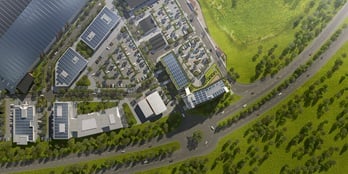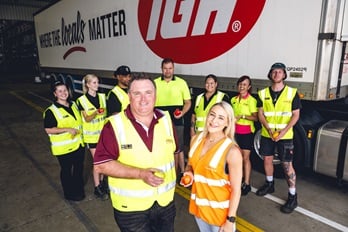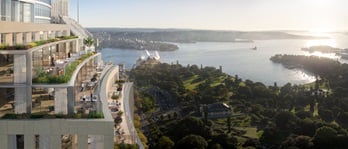Is there a scarcity of industrial zoned land in Sydney and Melbourne, or is the demand for industrial zoned land unsustainable?
By proceeding you confirm that you are a resident of Australia or New Zealand accessing this website from within Australia or New Zealand and you represent, warrant and agree that:
- you are not in the United States or a “U.S. person”, as defined in Regulation S under the U.S. Securities Act of 1933, as amended (“U.S. Person”), nor are you acting for the account or benefit of a U.S. Person;
- you will not make a copy of the documents on this website available to, or distribute a copy of such documents to, or for the account or benefit of, any U.S. Person or any person in any other place in which, or to any other person to whom, it would be unlawful to do so; and
- the state, territory or province and postcode provided by you below for your primary residence in Australia or New Zealand are true and accurate.
Unfortunately, legal restrictions prevent us from allowing you access to this website. If you have any questions, please contact us by e-mail by clicking on the link below.
Are we heading into a ‘perfect storm’ of restricted supply, the growth of automation and e-commerce and a rush of capital into the Industrial space that will drive industrial land prices to unsustainable levels?
Andrew Simons, our Head of Industrial Development, says Sydney is on track to run out of zoned industrial land, especially large greenfield sites suitable for companies with substantial requirements.
“I am chair of the Industrial Property Committee of the Property Council of Australia, which deals with issues facing the industry, and this has been our No.1 focus for a while,’’ says Simons. “We've been working in partnership with the Greater Sydney Commission (GSC) and the various state government departments to address the problem.’’
With industrial land increasingly scarce in other areas of Sydney, the state urgently needs to release more supply in the west, Simons says. But in recent years the focus has been on the new airport development at Badgerys Creek.
“As a result, within the next two to three years, the reality is that western Sydney could actually run out of land that is zoned, serviced and available to meet requirements.”
Simons says it is understandable that so much of the government’s focus has been on the multibillion-dollar new airport development and unlocking the future employment land that will adjoin the airport but it's going to take a number of years for that area to be serviced and released.
“We've been working hard with the GSC and the various state government departments to encourage them to release land ahead of what's happening in Badgerys Creek. For example there is land in the Kemp's Creek and Erskine Park areas that could be released now.’’
Exacerbating the supply issue is the rapidly increasing demand for large sites for developments such as automated warehouses and e-commerce facilities. CBRE predicts that growth in e-commerce alone will create requirement for an additional 350,000 sqm of new industrial and logistics space in Australia each year until 2022, much of it in the form of large distribution centres.
While there is some consolidation occurring in older industrial areas, it is very difficult to create large enough sites this way due to fractured ownership, and as such greenfield sites are in high demand.
“We are seeing a very strong trend towards automation at the moment,’’ says Simons.
“The large retailers are building new facilities to create efficiencies, reduce costs in their supply chains, service the shift from retail shopping to online and keep ahead of their competitors.
“In the other areas we’re doing a lot of work with e-commerce operators who are building new automated facilities to accommodate the significant growth that is driving their requirement for additional new space.
With the shortage of suitable locations in Sydney, some businesses are being driven to look elsewhere.
“One of our clients has now chosen to get out of Sydney,’’ says Simons. “We’ve just built a new facility for them in Queensland, they're in the process of developing a new facility in Melbourne, and they're actually going to service Sydney from Brisbane and Melbourne.’’
Brisbane has more supply than other states but for sites that can accommodate large requirements, space is becoming more limited. Other eastern seaboard capital cities are experiencing the same issues as Sydney, although not yet to quite the same extent.
“In Melbourne’s west there has traditionally been a significant supply of zoned industrial land, but a few years ago the Victorian state government rezoned a large area to residential to meet supply. That land was planned to be the next stage of zoned industrial land, so now we have a supply issue for industrial land in Western Melbourne, which has never occurred before,” says Simons.
“There needs to be a focus on identifying and realising land that can be serviced quickly to meet the current growth in the Industrial and Logistics sector. In the west of both Sydney and Melbourne, we will see a supply issue in the next five years that must be addressed.”


